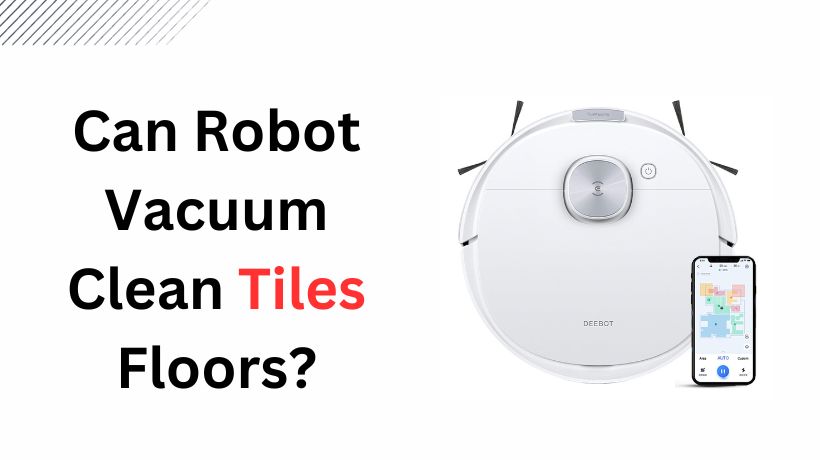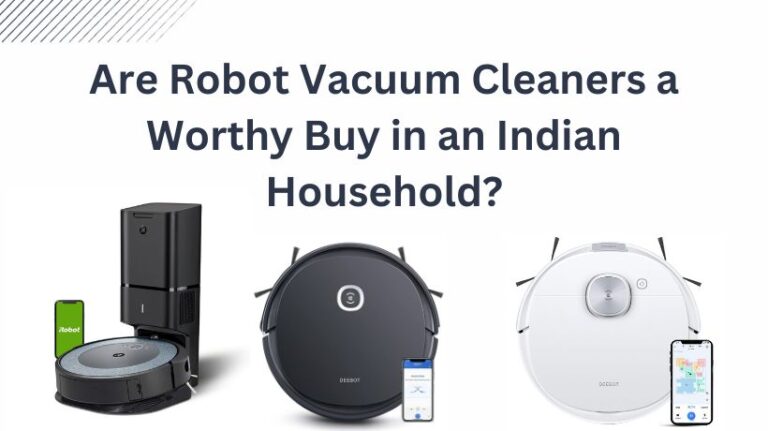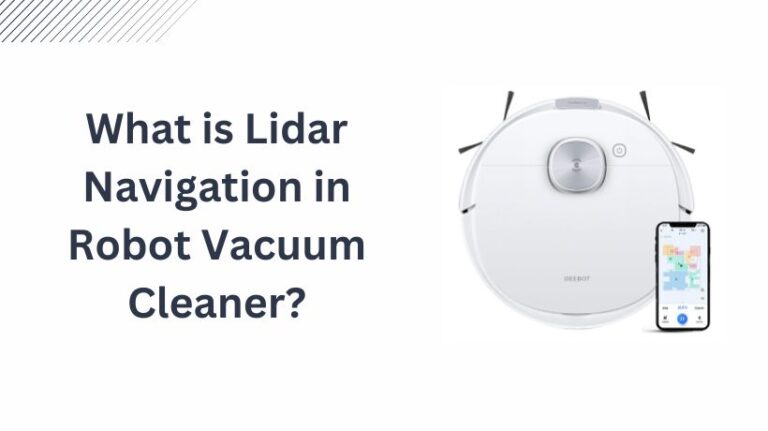In the fast-paced world of technological advancements, one area that has seen remarkable progress is home automation. Among the myriad of smart devices available, robot vacuums have become a popular choice for homeowners seeking efficient and convenient cleaning solutions. This article delves into the capabilities of robot vacuums specifically on tile floors, examining their effectiveness, benefits, and considerations.
Do robot vacuums work on tile floors?
Yes, robot vacuums are designed to work on tile floors. Modern robot vacuum models are equipped with advanced sensors, improved suction power, and navigation capabilities, making them effective in autonomously cleaning tile surfaces.
Table of Contents
ToggleThey can navigate around furniture, detect obstacles, and provide efficient cleaning on smooth and often slippery tile floors. Users should ensure that the specific model they choose is compatible with smooth surfaces and follow maintenance guidelines for optimal performance.
Also Read: 7 Best Robot Vacuum Cleaner for Tile Floors in India
Best Robot Vacuum Cleaner for Tile
Understanding Robot Vacuum Technology:
Robot vacuums, also known as robotic vacuum cleaners, are autonomous devices designed to autonomously clean floors. Equipped with sensors, brushes, and suction mechanisms, these intelligent gadgets navigate spaces, detect obstacles, and perform cleaning tasks without direct human intervention. Advanced models often come with additional features such as app connectivity, scheduling options, and mapping capabilities.
Tile Floors and Their Unique Cleaning Challenges:
Tile floors are a common flooring choice in many homes due to their durability, easy maintenance, and aesthetic appeal. However, they present unique challenges for traditional cleaning methods and even some robot vacuums. The smooth and often slippery surface of tiles can be challenging for some models to navigate without slippage, while grout lines may trap dirt and debris, requiring more thorough cleaning.
The Evolution of Robot Vacuum Technology for Tile Floors:
Early robot vacuums faced limitations in cleaning different types of surfaces effectively. However, manufacturers have continually improved and adapted their designs to accommodate various flooring materials, including tiles. Modern robot vacuums feature enhanced suction power, better maneuverability, and intelligent sensors to optimize performance on tile floors.
Benefits of Using Robot Vacuums on Tile Floors:
Time Efficiency: Robot vacuums can operate autonomously, allowing homeowners to multitask or relax while the device efficiently cleans the tile floors. Scheduled cleanings further enhance time management, ensuring floors remain consistently clean.
Precision Cleaning: The compact design and advanced sensors of robot vacuums enable them to navigate around furniture and other obstacles, reaching areas that might be challenging for traditional vacuums. This precision is particularly advantageous on tile floors with grout lines.
Improved Air Quality: Many robot vacuums come equipped with high-efficiency filters that capture allergens, dust, and pet dander, contributing to improved indoor air quality. This feature is especially beneficial for individuals with allergies or respiratory issues.
Smart Features: Some robot vacuums can be controlled and monitored through smartphone apps, allowing users to customize cleaning schedules, track cleaning progress, and receive notifications. This level of control adds to the convenience of using robot vacuums on tile floors.
Considerations When Using Robot Vacuums on Tile Floors:
Surface Compatibility: While many robot vacuums are designed to work on a variety of surfaces, it’s essential to check the product specifications to ensure compatibility with tile floors. Look for models specifically equipped for smooth surfaces.
Mapping and Navigation: Advanced mapping and navigation features contribute to efficient cleaning. Models with sensors and mapping technology can navigate tile floors, avoiding collisions and ensuring thorough coverage.
Suction Power: Effective cleaning on tile floors requires adequate suction power. Consider models with strong suction capabilities to lift dirt, dust, and debris from the smooth surface of the tiles.
Maintenance and Cleaning: Regular maintenance is crucial for optimal performance. Emptying the dustbin, cleaning brushes, and checking sensors ensure that the robot vacuum operates effectively on tile floors.
Real-World Experiences and User Reviews:
To gain insights into the practical application of robot vacuums on tile floors, exploring user reviews and real-world experiences is invaluable. By understanding the experiences of other homeowners, potential buyers can make informed decisions about which robot vacuum model suits their specific needs.
Conclusion:
In conclusion, the integration of robot vacuums into households has revolutionized the way we approach floor cleaning, with notable advancements in their ability to clean tile floors effectively. As technology continues to evolve, we can expect further improvements, making these smart devices an even more integral part of modern home maintenance. Whether it’s the time efficiency, precision cleaning, or smart features, robot vacuums are proving to be a valuable asset for keeping tile floors spotless with minimal effort from homeowners.
FAQs on Cleaning Tile Floors with Robot Vacuums:
1. What is the fastest way to clean tile floors?
The fastest way to clean tile floors is by using a robot vacuum. These autonomous devices can efficiently navigate and clean large areas without direct human intervention. With features like scheduled cleanings and smart navigation, robot vacuums provide a quick and convenient solution for maintaining tile floors.
2. Which is the best robot vacuum for tile floors? ECOVACS Deebot N10
While preferences may vary, the ECOVACS Deebot N10 is recognized as a reliable choice for cleaning tile floors. With its advanced features, including strong suction power and intelligent navigation, the Deebot N10 is designed to effectively clean smooth surfaces, making it a popular option for homeowners seeking optimal performance on tile floors.
3. Are cheap robot vacuums worth it?
The value of cheap robot vacuums depends on individual needs and expectations. While some budget-friendly options may offer basic cleaning capabilities, they may lack advanced features found in higher-end models. It’s essential to consider factors such as suction power, navigation, and durability when assessing the worth of a cheap robot vacuum. Researching user reviews and product specifications can help make an informed decision.
4. How often should you vacuum tile floors?
The frequency of vacuuming tile floors depends on factors such as foot traffic, the presence of pets, and personal preferences. Generally, it is recommended to vacuum high-traffic areas at least once or twice a week. For areas with less traffic, a weekly or bi-weekly cleaning may suffice. Adjust the frequency based on the specific conditions of your home to maintain a clean and polished tile surface.
5. Are robot vacuum cleaners good for tile floors?
Yes, robot vacuum cleaners are well-suited for cleaning tile floors. Modern robot vacuums are equipped with sensors and features that enable them to navigate smoothly on tile surfaces. Their ability to reach tight spaces, detect obstacles, and provide consistent cleaning makes them effective and convenient for maintaining the cleanliness of tile floors. Users should ensure that their chosen robot vacuum model is designed for use on smooth surfaces and follow the manufacturer’s recommendations for optimal performance.




